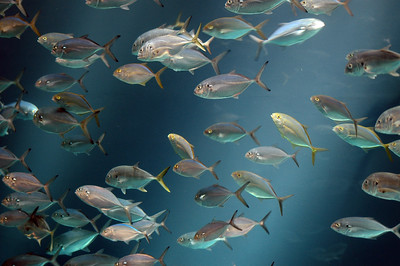The successful operation of an aquaponics system requires continuous monitoring, preventive maintenance, and an understanding of scaling possibilities. This article highlights the practical aspects of system management.

Ongoing Operation: Monitoring Critical Parameters
Systematic monitoring is essential for the stable operation of an aquaponics system. An overview of the most important parameters:
Water Parameters
- pH Value (daily): Optimal range 6.5-7.0. A drop indicates nitrification processes, a rise indicates plant activity.
- Oxygen Content (continuous): At least 5 mg/l for fish, >6 mg/l for optimal bacterial activity.
- Temperature (daily): 18-24°C for mixed systems, species-specific adjustments possible.
- Conductivity (weekly): Indicator of total nutrient content, ideal 800-1200 µS/cm, which corresponds to 1.2 EC.
Nutrient Monitoring
- Ammonium (NH₄⁺): Daily check, should not exceed <0.5 mg/l.
- Nitrite (NO₂⁻): Twice weekly, limit <1.0 mg/l.
- Nitrate (NO₃⁻): Weekly, target range 20-50 mg/l.
- Redox Potential: Weekly, optimal 250-350 mV as an indicator of microbiological activity.
Maintenance and Fault Diagnosis
Preventive maintenance routines prevent system failures and guarantee long-term stability:
Maintenance Schedule
| Interval | Measure | Goal |
|---|---|---|
| Daily | Visual inspection of fish, plants, and technical components | Early detection of abnormalities |
| Weekly | Cleaning of pre-filters, checking pump performance | Prevention of clogging, ensuring water circulation |
| Monthly | Partial water change (10-15%), cleaning of biofilter surfaces | Reduction of pollutant accumulation, preservation of biofilm activity |
| Quarterly | Inspection of all hoses and connections, calibration of sensors | Prevention of leaks, ensuring correct measurements |
Common Problems and Solutions
- Algae Growth: Reduce light exposure, adjust nutrient levels, install UV clarifier.
- pH Drop: Dose calcium carbonate or potassium bicarbonate, increase aeration.
- Plant Diseases: Remove affected plants, check nutrient balance, add beneficial microorganisms.
- Cloudy Water: Improve mechanical filtration, reduce feed amount, install sludge separator.
Fish Health
Indicators for fish health:
- Active swimming behavior
- Consistent appetite
- Clear eyes and intact fins
- Balanced social behavior
If abnormalities occur: Check water parameters, reduce stress factors, establish quarantine if necessary. More on this in the article on stocking density.
Scaling Possibilities
Aquaponics systems can be adapted to various sizes and application areas:
Small Systems (Hobby Area)
Size: 1-2 m² growing area, 200-500 liter water volume
Suitable for: Herbs, salads, ornamental fish
Advantages: Low space requirement, easy maintenance, ideal for beginners
Recommended Technology: Air-pumped systems, manual parameter control
Medium Systems (Semi-professional)
Size: 5-20 m² growing area, 1000-5000 liter water volume
Suitable for: Vegetables, herbs, food fish
Advantages: Good yields, partially automated processes, educational projects
Recommended Technology: Automated aeration, pumps with timer, simple sensors
Large Systems (Urban Farming)
Size: 50+ m² growing area, 10,000+ liter water volume
Suitable for: Commercial food production, fish farming
Advantages: Economic yields, high automation, circular economy
Recommended Technology: Fully automated control, redundant systems, professional water treatment
Urban Farming Projects
The integration of aquaponics into urban spaces offers diverse possibilities:
Implementation Examples
- Rooftop Farms: Utilization of unused roof areas for food production with closed loops.
- Vertical Farms: Multi-level systems in urban areas with optimized space utilization.
- Educational Institutions: Integration into schools and universities to teach sustainable agriculture.
- Social Projects: Community gardens with aquaponics to promote local food production.
Outlook: Future of Aquaponics
The development of aquaponics shows promising trends for the future:
Technological Developments
- AI-supported monitoring and control systems
- Energy self-sufficient systems through solar and wind power
- Modular systems for easy scalability
- Improved sensor technology for more precise parameter control
Ecological Developments
- Integration of further loop components (insects, fungi)
- Regional adaptations with local species
- Improved closure of material cycles
- Combination with other sustainable cultivation methods
Practical Tip: Documentation
Keep a system logbook with all measurements, observations, and interventions. This documentation helps with fault diagnosis and optimization of processes over time.
Kontext:



Add Comment